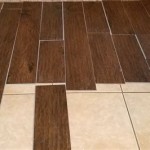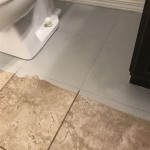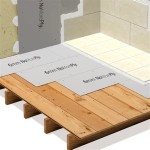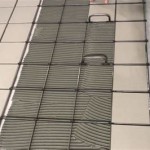```html
Get the Perfect Shine: How To Clean Saltillo Tiles In Kitchen
Saltillo tiles, with their rustic charm and warm terracotta hues, are a popular flooring choice for kitchens. Their porous nature, however, makes them susceptible to staining and dullness, particularly in a high-traffic area like the kitchen. Proper cleaning and maintenance are essential to preserving their beauty and ensuring longevity. Ignoring regular cleaning results in buildup of grease, food spills, and grime, obscuring the tile's natural color and diminishing its signature shine.
This article provides a comprehensive guide on how to effectively clean Saltillo tiles in the kitchen, restoring their original luster and providing long-lasting protection. It focuses on key aspects of Saltillo tile care, including daily maintenance, deep cleaning techniques, and appropriate sealing practices.
Regular Maintenance: Preventing Dirt Buildup
The foundation of a sparkling Saltillo tile floor lies in consistent, preventative maintenance. Regular cleaning minimizes the accumulation of dirt and grime, making more intensive cleaning sessions less frequent and less arduous. This approach also safeguards the tile's integrity, mitigating the risk of permanent staining and damage.
The most fundamental aspect of regular maintenance is sweeping or vacuuming. This should be done at least once a day, or more frequently in heavily used kitchens. Use a soft-bristled broom or a vacuum cleaner with a soft brush attachment to avoid scratching the tile's surface. Pay particular attention to areas around the stove, sink, and refrigerator, where spills and crumbs are more likely to occur.
For day-to-day cleaning, a damp mop is highly effective. Use a clean mop and lukewarm water, adding a pH-neutral cleaning solution specifically designed for Saltillo tiles. Avoid excessive water, as the porous nature of the tile allows it to absorb moisture, which can lead to efflorescence or other water-related damage. Wring the mop thoroughly before each swipe across the floor. The ideal pH range of the cleaning solutions is between 7 and 8. Any solution outside this range may damage the tile.
Spot cleaning is essential for addressing spills and stains promptly. Blot spills immediately with a clean, absorbent cloth. Avoid rubbing, which can spread the stain and push it deeper into the tile's pores. For stubborn stains, a paste made of baking soda and water can be applied to the affected area. Allow the paste to sit for a few minutes before gently scrubbing with a soft brush and rinsing thoroughly with clean water. Thorough rinsing is crucial to remove any residue from the cleaning agent, which can attract dirt and dull the tile’s appearance.
Area rugs and mats can provide a significant barrier against dirt and wear in high-traffic areas. Place rugs in front of the sink, stove, and entryways to trap dirt and prevent it from being tracked across the floor. Regularly shake out or vacuum these rugs to maintain their effectiveness. Ensure that the underside of the rugs is non-slip to prevent accidents.
Deep Cleaning: Restoring Shine and Removing Stubborn Stains
Despite diligent regular maintenance, Saltillo tiles in the kitchen will inevitably require deep cleaning to remove ingrained dirt, grease, and stubborn stains. Deep cleaning should be performed periodically, typically every few months, depending on the level of foot traffic and usage in the kitchen. This process involves using more potent cleaning solutions and techniques to effectively lift embedded grime and revive the tile's inherent shine.
Before commencing the deep cleaning process, it is important to thoroughly sweep or vacuum the floor to remove any loose debris. This will prevent the debris from being spread around during the cleaning process and potentially scratching the tile surface.
For deep cleaning, a specialized Saltillo tile cleaner is recommended. These cleaners are formulated to effectively remove grease, grime, and stains without damaging the tile's surface or sealing. Always follow the manufacturer's instructions carefully when using these products. Avoid using harsh chemicals, such as bleach or ammonia, as they can damage the tile and discolor the grout. Furthermore, these harsh chemicals may also degrade or remove existing sealant.
Apply the cleaning solution to the floor according to the manufacturer's instructions. In many cases, this involves diluting the cleaner with water and applying it evenly across the floor using a mop or sponge. Allow the solution to dwell on the floor for the recommended time, typically 5-10 minutes, to loosen the dirt and grime. However, do not allow the solution to dry on the floor, as this can leave a residue that is difficult to remove.
After the dwell time, scrub the floor with a soft-bristled brush or a scrubbing pad specifically designed for tile. Focus on areas with heavy staining or grime buildup, such as around the stove and sink. Avoid using abrasive scrubbers, as they can scratch the tile's surface. For grout lines, a grout brush can be used to remove stubborn dirt and mildew. Be mindful of the pressure applied, as excessive scrubbing can damage the grout.
Once the floor has been thoroughly scrubbed, rinse it thoroughly with clean water. Use a mop or sponge to remove all traces of the cleaning solution. Repeat the rinsing process until the water runs clear. It is crucial to remove all residue from the cleaning solution, as any remaining residue can attract dirt and dull the tile's appearance.
After rinsing, dry the floor thoroughly with clean towels or a microfiber mop. This will prevent water spots and efflorescence from forming. Ensure that the floor is completely dry before walking on it to prevent slips and falls. Consider using a fan to circulate air and expedite the drying process.
For particularly stubborn stains, such as grease or oil stains, a degreasing solution may be necessary. Apply the degreaser to the affected area and allow it to dwell for the recommended time before scrubbing and rinsing thoroughly. Multiple applications may be required for heavily stained areas.
Sealing and Protecting Saltillo Tiles
Sealing is a critical step in protecting Saltillo tiles and maintaining their beauty. A sealant creates a barrier that prevents dirt, grease, and spills from penetrating the tile's porous surface, making it easier to clean and preventing staining. It also enhances the tile's natural color and shine.
Before sealing, ensure that the tiles are thoroughly cleaned and completely dry. Any dirt or moisture trapped beneath the sealant can lead to problems, such as efflorescence or peeling sealant. Allow the floor to dry for at least 24 hours after cleaning before applying the sealant.
Choose a high-quality sealant specifically designed for Saltillo tiles. There are two main types of sealants: penetrating sealants and surface sealants. Penetrating sealants soak into the tile's pores, providing protection from within. Surface sealants form a protective layer on top of the tile. Penetrating sealants are generally preferred for Saltillo tiles, as they allow the tile to breathe and prevent moisture buildup.
Apply the sealant according to the manufacturer's instructions. Typically, this involves applying a thin, even coat of sealant to the floor using a paint pad applicator or a clean mop. Avoid applying too much sealant, as this can create a sticky or cloudy finish. Overlapping brushstrokes may be required.
Allow the sealant to dry completely before applying a second coat. The drying time will vary depending on the type of sealant and the environmental conditions. Follow the manufacturer's recommendations for drying time. Two coats of sealant are typically recommended for optimal protection. The first coat will penetrate the tile, while the second coat will provide a more durable barrier.
After the final coat of sealant has dried completely, apply a Saltillo tile finish or wax. This will provide an additional layer of protection and enhance the tile's shine. Apply the finish or wax according to the manufacturer's instructions. Buff the floor with a soft cloth or buffing machine to achieve a smooth, even finish.
Re-seal the Saltillo tiles periodically, typically every 1-2 years, depending on the level of traffic and wear. Over time, the sealant will wear down, leaving the tile vulnerable to staining and damage. Regular re-sealing will ensure that the tile remains protected and beautiful for years to come.
By following this comprehensive guide, homeowners can effectively clean and maintain their Saltillo tiles in the kitchen, preserving their beauty and extending their lifespan. Consistent regular maintenance, periodic deep cleaning, and proper sealing are the key components of a successful Saltillo tile care regimen. The result is a kitchen floor that boasts a rich, warm glow and enduring charm.
```
How To Clean Saltillo Tile Delineate Your Dwelling

How You Can Keep Your Saltillo Tile Floors Clean And Shiny Glammed Events

Saltillo Tile Care Cleaning Maintenance Pfokus

How You Can Keep Your Saltillo Tile Floors Clean And Shiny Glammed Events

How To Clean Saltillo Tile Flooring Best Tips Maintenance

Saltillo Tile Care Cleaning Maintenance Pfokus

How Do I Deep Clean And Reseal Saltillo Tile Floors Hometalk

How To Clean Saltillo Tile Delineate Your Dwelling

How Do I Deep Clean And Reseal Saltillo Tile Floors Hometalk

How To Clean Saltillo Tile Delineate Your Dwelling
Related Posts








